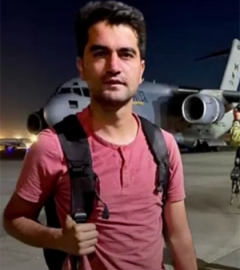Rich countries will need 380 million migrants to keep the lights on – research
Wealthy countries’ welfare states can only be preserved into the future by an influx of migrants, according to new research.
 Rich countries will need 380 more million workers by 2050 as life expectancy rises and fertility rates decline, according to a recent paper by Dr Lant Pritchett, a Research Fellow at Oxford University’s Blavatnik School of Government.
Rich countries will need 380 more million workers by 2050 as life expectancy rises and fertility rates decline, according to a recent paper by Dr Lant Pritchett, a Research Fellow at Oxford University’s Blavatnik School of Government.
“In the coming decades, the developed world will face a daunting demographic challenge,” it says.
“As life expectancy goes up and fertility rates go down in North America, Europe, and the Pacific nations of Australia, Japan, and New Zealand, older, retirement-age populations will grow while labour forces shrink. Rich countries, in other words, are running out of young people.
“Programs such as Social Security and Medicare that support the elderly in the United States may prove impossible to fund. At the same time, a shortage of young workers will leave crucial gaps in the labour market, especially when it comes to caring for the elderly.”
Dr Pritchett says the solution is both simple and politically challenging.
“In the coming decades, rich countries should open their borders to more workers from poorer countries. At a time of rising nativism and xenophobia, calling for increased immigration may be unpopular,” he says.
But to allay legitimate concerns about rapid cultural change, developed nations can borrow from existing models of migration, such as in Canada, Singapore, and Persian Gulf countries, that meet the demands of labour markets without upsetting social cohesion, Dr Pritchett says.
He says a way of understanding the need for migrants in wealthy countries is to calculate the result of their absence.
“What would happen if the developed world shut its borders and didn’t take in more migrants? UN population data paints a stark picture of current demographic trends in the developed world,” Dr Pritchett says.
“Thanks to decreasing fertility and increasing longevity rates, wealthy countries will cumulatively have 120 million fewer people between the ages of 25 and 64 in 2050 than they had in 2020, an 18 per cent decrease.
“As working-age populations slump across the developed world, longer lifespans will boost the population of people over the age of 65 by a total of 95 million by 2050, a 38 percent increase.
“The ranks of those over 80 will swell by 61 million, a 91 percent increase. All told, the population above age 65 in rich countries will go up by around 95 million, while in the absence of migration, these economies will lose 120 million working-age people.”
Dr Pritchett says every developed country has a social security scheme that seeks to guarantee income and health for people in old age that depend on collecting contributions from the young to support the old.
“With declining working-age populations and growing elderly populations, these traditional arrangements in wealthy countries face the possibility of collapse,” he says.
Politicians rarely tackle this subject head-on because the potential solutions are difficult, if not altogether impossible, to sell to their domestic constituents, Dr Pritchett said.
One approach would be tom increase taxes to offset a shrinking labour force. Another is to cut benefits for the elderly, the paper says.
But what if migrants filled the gap in the labour force? it asks.
It also asks if it would be possible to attract this huge number of workers – around 380 million.
“Wealthy countries need more immigrants. People in poorer countries want to go to wealthy ones. But the politics of labour mobility lags behind the economic realities,” the paper says.
Dr Pritchett says the populations of wealthy countries are growing more hostile to the idea of welcoming greater numbers of foreigners.
“But necessity is the mother of invention. One solution, which Australia and Canada have used for decades, is a ‘points based’ immigration system to determine which prospective migrants are most likely to contribute economically and to integrate socially and politically,” the paper says.
This system has allowed Canada and Australia to welcome a high proportion of foreign-born workers without inflaming domestic political tensions.
“But the Canadian model doesn’t meet the real demand for low- and medium-skilled workers. It also results in brain drain in the developing world, taking those who would contribute the most in their home countries,” the paper says.
“An alternative model is visible in countries such as Singapore and the Gulf states that have low barriers to entry for foreign-born workers but allow them only a temporary status and little prospect of permanent residence,” it says.
“In the coming years, wealthy countries should adopt elements of both models of labour mobility, using a points-based system to steer those migrants on a path to citizenship and more temporary and rotational schemes of labour mobility to attract medium- and low-skilled labour,” the paper argues.
But it says there is need for compliance to maintain a “safe, orderly, and regular flow” as envisaged in the UN SDGs, and there is also need regulation to prevent exploitation.
“It is not impossible to juggle these imperatives. Many countries, such as Australia with its Pacific Labour Scheme, are now proving that it is feasible to set up temporary programs that create opportunities for the world’s poor and respect their rights, while addressing the needs of the labour market in aging countries,” Dr Pritchett said.
“Right-wing populists may inveigh against immigrants and warn of immense cultural change, but they cannot ignore the numbers. The arrival of millions more migrants to the wealthy economies of the world will make some uncomfortable and fearful, but the alternative—the disintegration of the social contract that safeguards the elderly—is far more dangerous,” he said.












